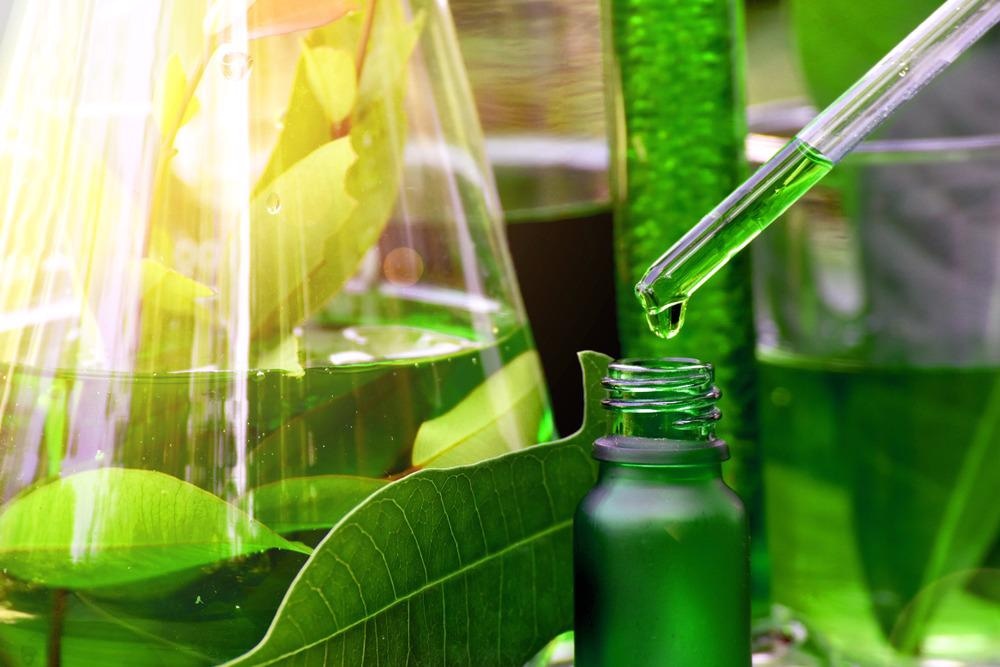 By Surbhi JainReviewed by Susha Cheriyedath, M.Sc.Feb 8 2022
By Surbhi JainReviewed by Susha Cheriyedath, M.Sc.Feb 8 2022In an article recently published in the journal NPJ Materials Degradation, researchers reviewed the use of plant-extract-based green corrosion inhibitors for the mitigation of carbon steel corrosion. The review also discussed their efficiency towards the forestalling of corrosion caused by H2SO4, HCl, and CO2.

Study: A review of plant extracts as green corrosion inhibitors for CO2 corrosion of carbon steel. Image Credit: ARTFULLY PHOTOGRAPHER/Shutterstock.com
Background
Carbon steel is widely utilized in the oil and gas industry, and it is an ideal material for pipeline construction due to its mechanical characteristics and inexpensive cost. The replacement of carbon steel with corrosion-resistant alloys in big oil and gas trunklines is usually not viable due to the substantially higher costs.
Carbon steel, on the other hand, is extremely corrosive. One of the most common factors affecting corrosion in oil and gas production is the presence of CO2, H2S, and organic acids (acetic acid, propionic acid, and formic acid), which can produce localized or pitting corrosion.
For carbon steel, the utilization of corrosion inhibitors is a cost-effective corrosion prevention technique. Eco-friendly, biodegradable, and low-cost inhibitor compositions are increasingly being developed and used. Many studies have examined plant-based extracts using a variety of electrochemical methodologies and characterization approaches.
Plant extracts seem to be promising alternatives to commercially synthesized inhibitor formulations; however, they still need to be optimized. The majority of plant extract research has not completely analyzed the effects of additional synergistic combinations in the industrial inhibitor formulations. As a consequence, further research into plant extracts as corrosion inhibitors is of great interest.
About the Study
In the present study, researchers reviewed the so-called green corrosion inhibitors that are derived from plant extracts and their potential towards mitigating the CO2 corrosion of carbon steel.
The researchers discussed CO2 corrosion, corrosion inhibitors, the use of plant extracts as green corrosion inhibitors, and their evaluation according to the environmental regulations. They also explored various analysis techniques to assess the performance of green corrosion inhibitors based on weight loss and electrochemical measurement techniques,
More from AZoM: Using AFM to Predict Electrochemical Impedance Spectra
The plant extracts' corrosion inhibitory properties were also studied using simple electrochemical techniques under air circumstances. The researchers briefly outlined the preparation methodologies of the green corrosion inhibitors based on the plant extraction procedure. The review also discussed the capability of these plant-extract-based green corrosion inhibitors in preventing the strong acid corrosion by HCl and H2SO4, and weak acid corrosion by CO2.
Observations
In this review, the researchers observed that corrosion engineers typically require less than a 0.1 mm y-1 inhibition rate. An uncontrolled corrosion rate of 24.01 mm y-1 was observed in the case of maize oil-derived diethanolamine sulfated fatty acid (SFA). The corrosion rates for mild steel in the blank and 1.0 M hydrochloric acid solutions at temperatures of 20–40 °C ranged from 2.754 mm y-1 to 42.052 mm y-1.
In addition, it was observed that the researchers who worked with maple leaf extract reported a decreased corrosion rate at a higher temperature for the same metal specimen, A1010 LCS. It was also found that high quantities of plant-extract-based inhibitors were required to achieve the equivalent protection levels as conventional inhibitors.
Conducting phytochemical screening and running molecular dynamic and quantum chemical simulations were found to be effective techniques to determine the most active ingredient of many phytochemicals existing in a plant extract. It was also observed that most of the commercial inhibitor formulations were made up of a variety of chemical substances.
In certain situations, it was observed that the corrosion rates in the blank solutions of identical corrosivity varied in a very wide range. Several studies reported that oil and gas were generated at high pressures and temperatures with corrosive gases like CO2. As a result, more rigorous laboratory testing at high temperature, high pressure, and shear stress were required for oil and gas field applications. Additionally, in many reports, only water-based electrolytes were tested for plant-extract-based inhibitors.
Conclusions
In conclusion, this review elucidates the potential and applications of ecologically benign plant-extract-based green inhibitors in eliminating the corrosion of carbon steel. The review also sheds light on the future utility of such plant-extract-based inhibitors in condensate-water or oil-water mixtures as up till now researchers have only assessed them in water-based electrolytes.
This could be achieved by introducing impurities such as sludge or sand to evaluate the suitability of these materials towards the adsorption on active inhibitor components. This method is frequently used in the evaluation of commercial corrosion inhibitors.
Overall, this review emphasizes the importance of adequate green inhibitors given the widespread utility of mild steel and the associated economic loss due to corrosion. The authors believe that the creation of an effective and commercial plant-extract-derived green inhibitor for use in gas and oil fields is a practical research topic with a lot of opportunities for innovation in inhibitor formulations.
Disclaimer: The views expressed here are those of the author expressed in their private capacity and do not necessarily represent the views of AZoM.com Limited T/A AZoNetwork the owner and operator of this website. This disclaimer forms part of the Terms and conditions of use of this website.
Source:
Fazal, B.R., Becker, T., Kinsella, B. et al. A review of plant extracts as green corrosion inhibitors for CO2 corrosion of carbon steel. npj Mater Degrad 6, 5 (2022). https://www.nature.com/articles/s41529-021-00201-5